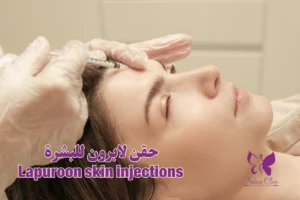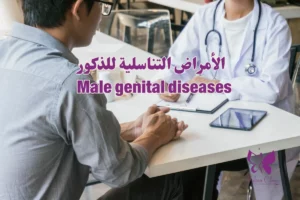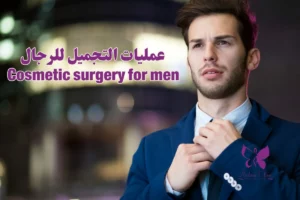Many women use hair dye to change its color, in order to get an attractive and renewed look.
On the face of it, this sounds good, but over time it can cause health damage to the hair.
In this article, we will learn about hair dye, its risks, and the different types of dyes.
And the dermatologists at the Freshness Center for Dermatology, Cosmetics and Laser in Hurghada recommend some tips when using them.
Types of hair dye
Hair dyes vary greatly in their chemical composition, and people are exposed to these substances through skin contact.
There are 3 main types of hair dyes and they include the following:
- temporary dyes
These dyes cover the surface of the hair but do not penetrate the hair roots, and generally last from 1 to 2 washes.
- Semi-permanent dyes
These dyes penetrate deep into the hair roots, and usually last 5 to 10 washes.
- Permanent (oxidizing) hair dyes
These types of dyes cause permanent chemical changes in the hair roots, and are the most popular types used.
The hair color in them does not change until the new hair grows back.
Sometimes called coal tar tinctures, due to some of the ingredients in them, they contain colorless substances such as aromatic amines and phenols.
These materials go through some reactions to become pigments, and darker types tend to use more coloring agents.
How does hair dye work?
The hair strand contains 95% proteins, which act like shingles to protect hair from:
- Humidity.
- the heat.
- UV.
Applying permanent or semi-permanent dyes causes a chemical reaction to raise these protective proteins, allowing the chemicals to penetrate the hair strand.
Dyes change the chemical composition of the hair, and the result is a change in its color.
You can also read : Genetic baldness and its treatment.
Hair dye benefits
- It adds a new touch to the hair and makes it look attractive.
- The method of dyeing hair is completely painless.
- Hair looks and feels thicker than it really is, as the hair dye stretches the strands.
- Correct hair color can enhance facial features, giving you an attractive appearance.
Despite the benefits of hair dyes, but you should pay attention to their harmful components, so we will learn about hair dye and its potential risks.
Hair dye and its risks
Some people think that hair dye is not harmful, but it may cause some problems for the hair such as:
- hair damageThe frequent use of hair dyes leads to hair damage, as it contains ammonia and hydrogen peroxide.
Composed of water and hydrogen, this chemical compound also acts as a bleaching agent by breaking down the melanin pigment in the hair.
If you do not use the right products, it will not only make the hair dull, but also make it brittle.
- eye infections, Hair dye can cause eye irritation or conjunctivitis As a result of the fumes and harmful chemicals in it.
- Loss of hair strength.
- Decreased ability of hair to deal with heat styling.
- Increased coarseness of hair follicles.
- It can lead to hair loss.
- Changing the nature of the hair, where the short- and long-term effects depend on the structure of your hair.
- If your hair is already thin or brittle, dyeing can make it weaker.
- Thick hair can also suffer from side effects because the dye may take longer to raise the hair proteins, and may require more applications.
- Allergic reactions. These dyes contain P-Phenylenediamine, an allergen (people with dermatitis can have a severe reaction.
- Tints also cause itching, redness and irritation of the skin, so patients should eczema And psoriasis avoided.
Does hair dye affect the pregnant woman?
Recent studies have indicated that the use of hair dyes can affect the fetus as it may cause a malignant tumor.
Therefore, dermatologists at the Freshness Center for Dermatology, Cosmetic and Laser in Hurghada advise pregnant women not to use such dyes that may affect the health of their fetus.
Do hair dyes cause asthma?
Tinctures contain persulfate, which can exacerbate asthma.
Continuous inhalation of these substances can also lead to coughing and lung infection.
You can also read : Mesotherapy for hair problems.
Do hair dyes cause cancer?
Most studies looking at whether coloring products increase the risk of cancer have focused on some types of cancer and have found that:
- People who are exposed to dyes at work, such as hairdressers, can develop bladder cancer, but to a small degree.
- Tinctures contain aromatic amines that can be carcinogenic as they are absorbed into the bloodstream.
Which is better dye with a light or dark color?
When it comes to lightening hair, the more bleaching, the greater the damage.
Studies have found that hair fibers are severely damaged by prolonged bleaching, especially the kind required to change very dark hair to lighter hair.
How can the risks of hair dye be reduced?
- Follow the instructions on the package.
- Make sure to do an allergy test before putting hair on your head.
- Wear gloves when dyeing hair.
- Do not leave the dye on your head for longer than directed.
- Rinse your scalp well with water after use.
- Never mix different hair dye products, as it may harm your hair and scalp.
- Avoid using dyes on your eyebrows or eyelashes, it can harm your eyes.
How to repair damaged hair as a result of using hair dye?
Hair can be protected by following some methods, including the following:
- Minimize hair styling with heat, as styling tools such as hair dryers and curling irons can weaken hair.
- Use heat protectant sprays or lotions before styling your hair.
- Hair coloring intervals should be spaced.
- Use a moisturizing shampoo and conditioner, as they help retain moisture after dyeing the hair.
- Keep in mind to dye the hair close to its natural color, as this may help reduce damage.
In conclusion, exposure to hair dye and its dangers can be avoided by using natural alternatives that do not harm the health of your hair or affect it.
Dermatologists at Nadara Beauty and Laser Center in Hurghada also recommend following a daily hair care routine to maintain it.
andSome treatments that contribute to hair nourishment can be used, such as:
1. Hair Plasma sessions rich in platelets that work on:
- Hair loss treatment.
- Treatment of split ends and brittleness.
- Increase blood flow to hair follicles, which improves its density.
2. Mesotherapy injections can also help stimulate hair growth as a result of hair loss using dyes, and increase its luster and protection.






